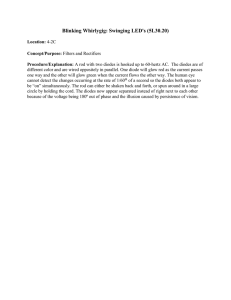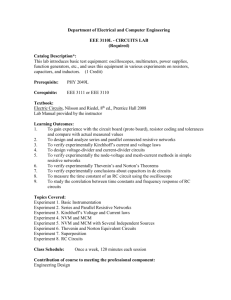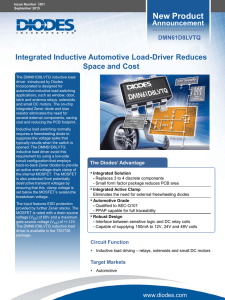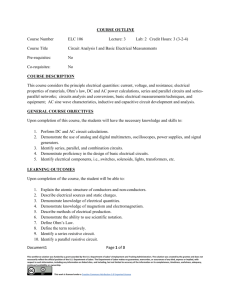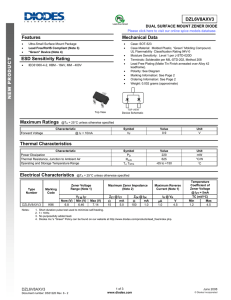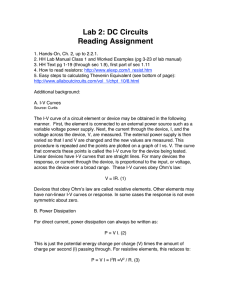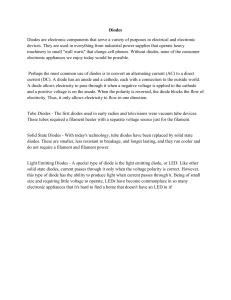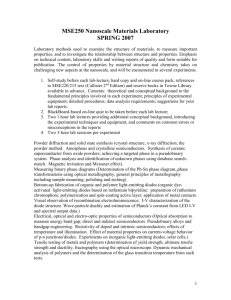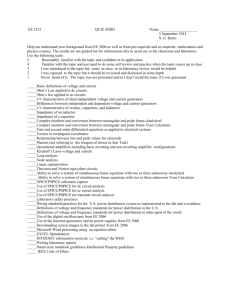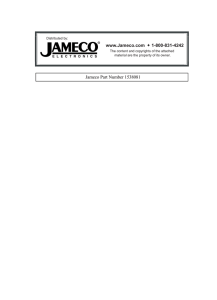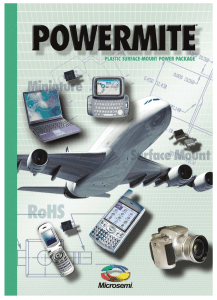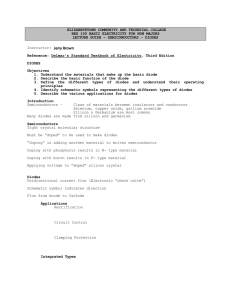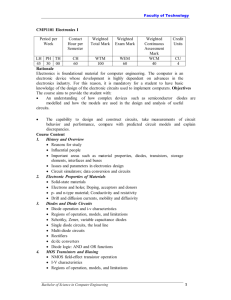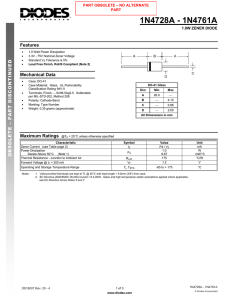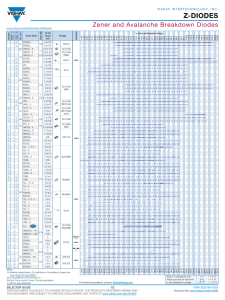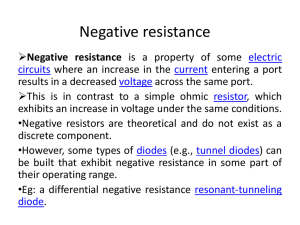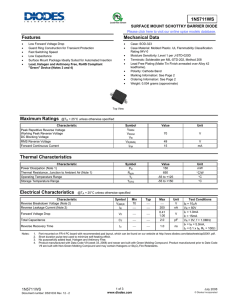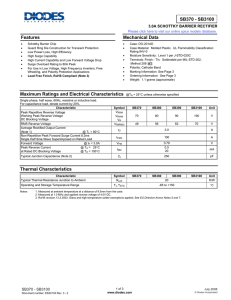EEE 101 INTRODUCTION TO ELECTRICAL AND ELECTRONICS
advertisement
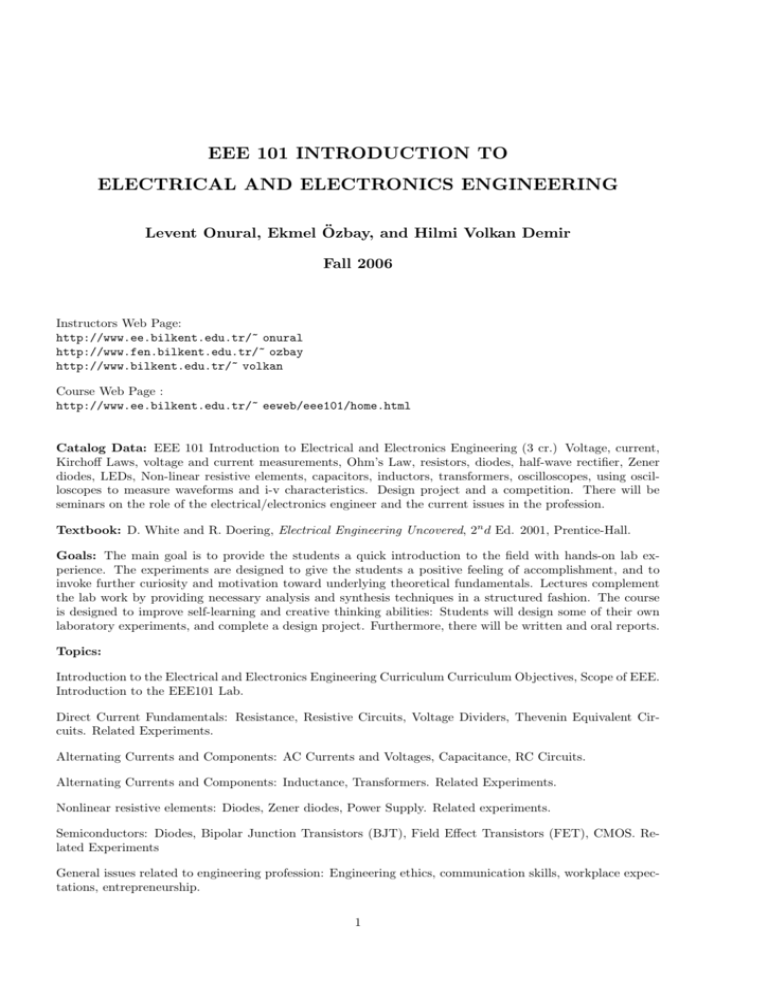
EEE 101 INTRODUCTION TO ELECTRICAL AND ELECTRONICS ENGINEERING Levent Onural, Ekmel Özbay, and Hilmi Volkan Demir Fall 2006 Instructors Web Page: http://www.ee.bilkent.edu.tr/~ onural http://www.fen.bilkent.edu.tr/~ ozbay http://www.bilkent.edu.tr/~ volkan Course Web Page : http://www.ee.bilkent.edu.tr/~ eeweb/eee101/home.html Catalog Data: EEE 101 Introduction to Electrical and Electronics Engineering (3 cr.) Voltage, current, Kirchoff Laws, voltage and current measurements, Ohm’s Law, resistors, diodes, half-wave rectifier, Zener diodes, LEDs, Non-linear resistive elements, capacitors, inductors, transformers, oscilloscopes, using oscilloscopes to measure waveforms and i-v characteristics. Design project and a competition. There will be seminars on the role of the electrical/electronics engineer and the current issues in the profession. Textbook: D. White and R. Doering, Electrical Engineering Uncovered, 2n d Ed. 2001, Prentice-Hall. Goals: The main goal is to provide the students a quick introduction to the field with hands-on lab experience. The experiments are designed to give the students a positive feeling of accomplishment, and to invoke further curiosity and motivation toward underlying theoretical fundamentals. Lectures complement the lab work by providing necessary analysis and synthesis techniques in a structured fashion. The course is designed to improve self-learning and creative thinking abilities: Students will design some of their own laboratory experiments, and complete a design project. Furthermore, there will be written and oral reports. Topics: Introduction to the Electrical and Electronics Engineering Curriculum Curriculum Objectives, Scope of EEE. Introduction to the EEE101 Lab. Direct Current Fundamentals: Resistance, Resistive Circuits, Voltage Dividers, Thevenin Equivalent Circuits. Related Experiments. Alternating Currents and Components: AC Currents and Voltages, Capacitance, RC Circuits. Alternating Currents and Components: Inductance, Transformers. Related Experiments. Nonlinear resistive elements: Diodes, Zener diodes, Power Supply. Related experiments. Semiconductors: Diodes, Bipolar Junction Transistors (BJT), Field Effect Transistors (FET), CMOS. Related Experiments General issues related to engineering profession: Engineering ethics, communication skills, workplace expectations, entrepreneurship. 1 Technical Writing: basics of preparing a project report. Seminars. Project. Prerequisites: None Computer Usage: None, except possible word processing for lab reports. Lab Experiment Topics: 1- Finding the resistance by voltage and current measurements, voltage and current division 2- Introduction to oscilloscope and signal generator 3- Finding the i-v characteristics of linear and piecewise linear resistive elements 4- Finding the i-v characteristics of a diode and Zener diodes 5- RC circuits 6- Rectifier, AC to DC converter 7- Amplifier circuits, AC to DC converter There will be lab experiments almost every week, with a few exceptions, to cover the lab material above. Grading: Lab Work: 50%, Project: 30%, Homework: 10%, Attendance and participation: 10%. Educational Spread of the Course: (None, Low, Medium or High) M (a) An ability to apply knowledge of Mathematics, Science and Engineering M (b) An ability to design and conduct experiments, as well as to analyze and interpret data M (c) An ability to design a system, component, or process to meet desired needs. None (d) An ability to function on multi-disciplinary teams. L (e) An ability to identify, formulate and solve engineering problems M (f) An understanding of professional and ethical responsibility M (g) An ability to communicate effectively L (h) The broad education necessary to understand the impact of engineering solutions in a global and societal context M (i) A recognition of the need for, and an ability to engage in life-long learning L (j) A knowledge of contemporary issues M (k) An ability to use the techniques, skills, and modern engineering tools necessary for engineering practice. 2
